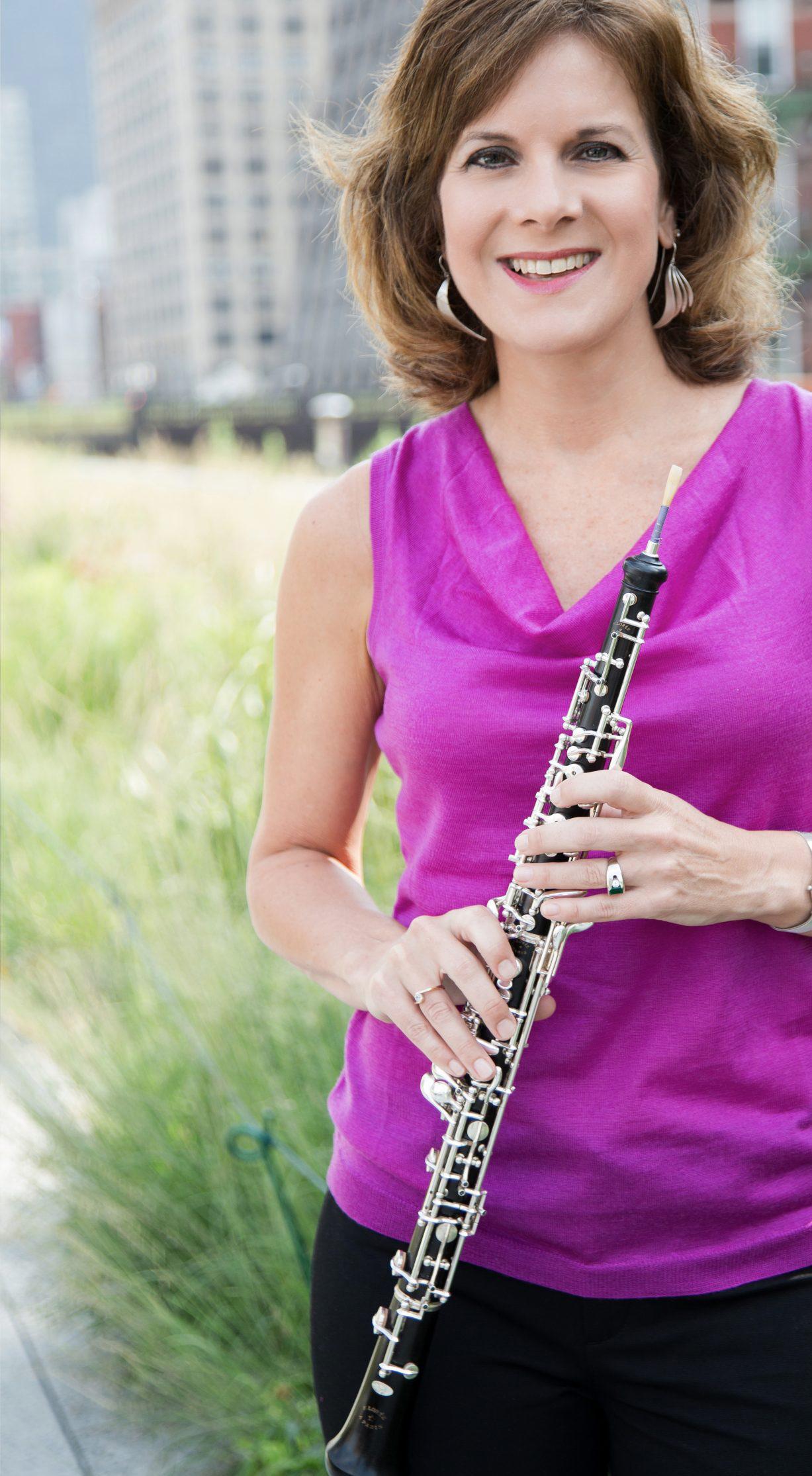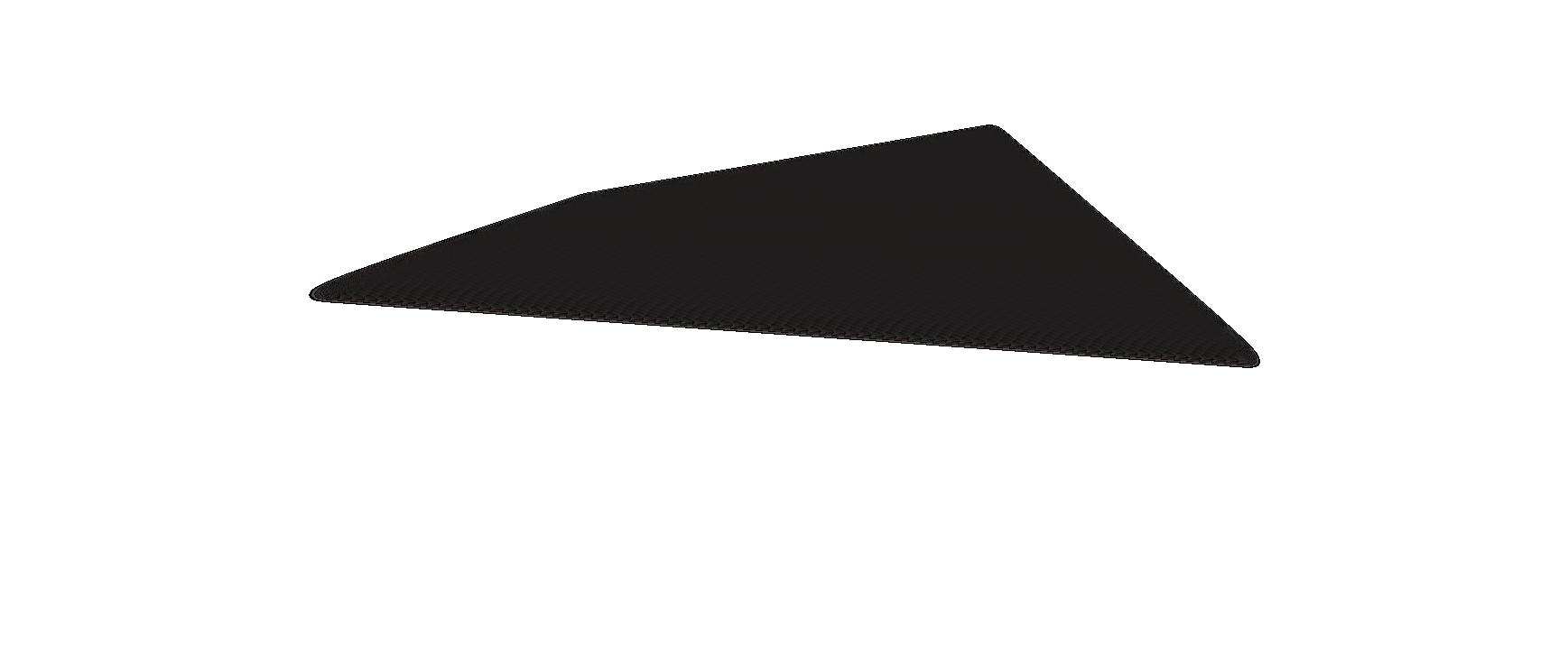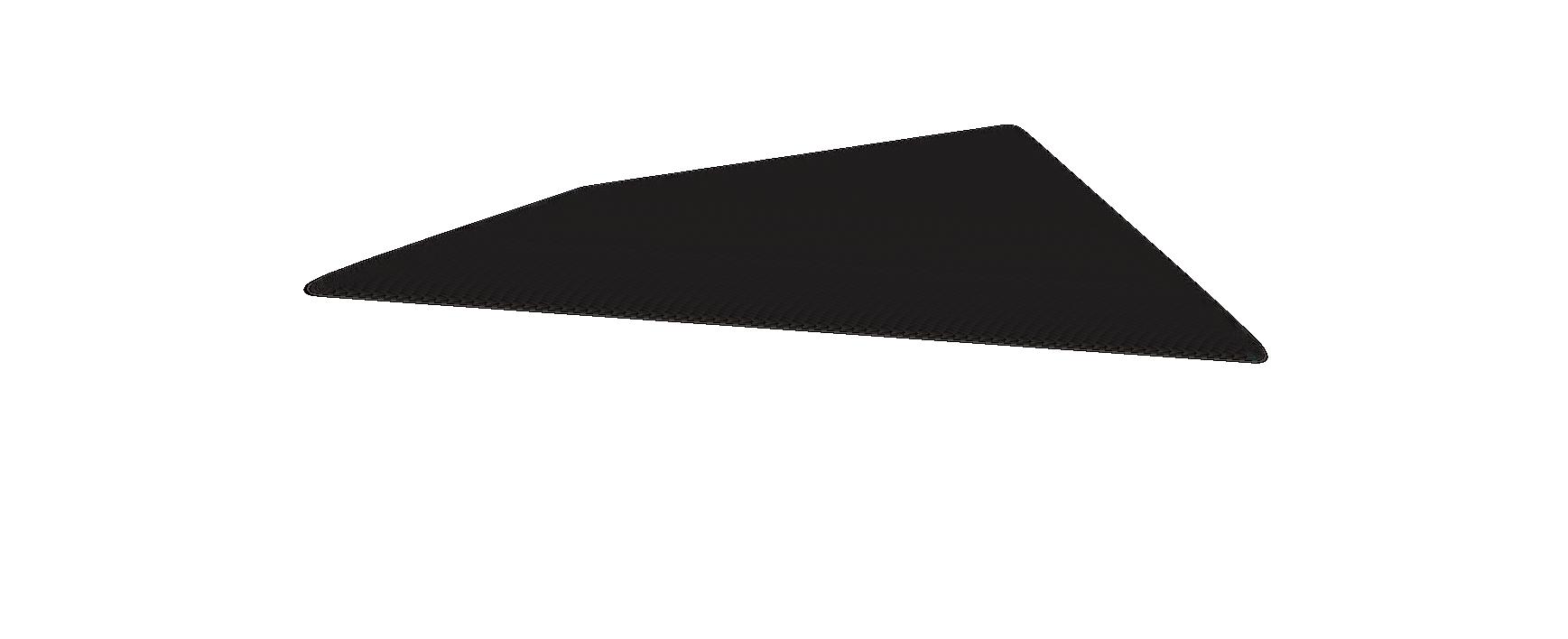
VIRTUOSO SERIES CONCERT:
MEGAN LANZ, FLUTE, AND CAYLA BELLAMY, BASSOON ORIGINALS AND ALTERATIONS
MARCH 25, 2025 | 7:30 P.M. | ORGAN RECITAL HALL
*Bouquet from the Glen for auxiliary flutes and bassoon, by Amber Sheeran (b. 1999)
I. Fanfare (Red Penstemmon)
II. Dance (Wild Geraniums)
III. Romance (White Yarrow)
*Carving Arches for alto flute and bassoon, by Kincaid Rabb (b. 1993)
*Winds in the port. Tango & Milonga for flute and bassoon, by Noelia Escalzo (b. 1979)
Labyrinth for flute and bassoon, by Theresa Martin (b. 1979)
I. Chasm
II. Uncharted Waters
III. North Rim
IV. Phantom Rance
V. Seeps and Springs
VI. Night Sky
VII. Carved
*Denotes a world premiere for the SoundCraftEd Commissioning Consortium led by Dr. Bellamy and Dr. Lanz
PROGRAM NOTES
Bouquet from the Glen, by Amber Sheeran (for the SoundCraftEd Commissioning Consortium)
The mountain house where my grandparents live is called “Sheeran’s Glen,” both on the giant metal sign that my dad made, and on the deed itself. When I was little, the family would all go up and visit for the weekend, and in the summer we would run around the mountain, jumping in pine needles, playing in the river, making mud pies, and when they were in bloom, I would pick flowers for my Nana. Then as I got older, I began to take an interest in wildflowers and other plants. Bouquet from the Glen revisits three different wildflowers that I would pick to put in these little bouquets.
Red Penstemon, or Beardtongue, is a bright hummingbird attractor that has bell-like flowers and grows fairly tall. For this flower, I found a fanfare appropriate, both for the color and the quick bird that it attracts, which are one of my Nana’s favorite things about where she lives. She used to have three or four hummingbird feeders right outside her window and you could see them zipping around all day.
Wild Geranium, or Cranesbill, is a low-growing plant with pale purple, pink, or white flowers. With its tendency to grow a little leggy and “out of control,” I thought a fast dance would be a good fit. The mountains were always a place of play and adventure for me, so this movement is wild and joyous.
White Yarrow, or Achillea, with its folklore in healing and everlasting love, was certainly meant for a romance. In this movement, the drone and the melody weave around each other, creating intimacy through counterpoint. The silence is just as important as the sound, and the play in tension and release are reminders that with strive there will still be comfort. There is a quote from the folk song “Wild Mountain Thyme,” which is one of the few Celtic folk songs to talk about moving on after losing a loved one, something that the plant’s namesake never achieved. It is something that I know in time, perhaps sooner than I am ready, will have to do. Yarrow has always been one of my favorite flowers. It is both soft and delicate, with its feathery leaves and tiny flowers, and strong and hardy, resistant to heat, drought, frost, and the harsh soil of the mountains. This movement, without contest, is the one I hold the most dear. It reminds me to love long and fierce; to appreciate the time we have with our loved ones. To slow down. To be present. To hold tight, then let go. To breathe.
Carving Arches, by Kincaid Rabb (for the SoundCraftEd Commissioning Consortium)
Nestled along the Colorado River a few miles north of Moab, Utah, an expanse of striking geological formations remain from when an ancient sea deposited a salt bed. During the process in which that ancient sea evaporated and became replaced by stratified younger rock, the spires, arches, and monoliths of Arches National Park were formed through both wind and water erosion. 300 million years later, more than 2 million people make the pilgrimage to Arches National Park to observe these geological features in person. Equally a meditation on the formation process for Arches National Park and a depiction of a day out hiking among the ancient monuments, Carving Arches is a peaceful work for alto flute and bassoon that captures the natural beauty of the United States of America.
Carving Arches was commissioned by the SoundCraftEd Chamber Consortium Project, Cayla Bellamy and Megan Lanz, lead commissioners, with the premiere and recording forthcoming. Carving Arches is under exclusivity until 2026, at which time it will be made available at Trevco Music.
Winds in the port., by Noelia Escalzo (for the SoundCraftEd Commissioning Consortium)
This piece depicts a scene from early 20th-century Buenos Aires, a time when ships carrying European immigrants fleeing war arrived in Argentina. The resulting blend of cultures contributed to the emergence of the Argentine tango and milonga. These musical forms express a complex mix of melancholy, hope, and the nostalgia associated with uncertain beginnings in a new land. The piece is structured to be danceable, adhering to the traditional bar counts of tango and milonga footwork.
Labyrinth, by Theresa Martin (transcription commission from original)
“You cannot see the Grand Canyon in one view, as if it were a changeless spectacle from which a curtain might be lifted, but to see it you have to toil from month to month through its labyrinths.”
-John Wesley Powell, The Exploration of the Colorado River and Its Canyons, 1874
The first European explorers to see the canyon in the 16th century were overwhelmed by the power of the intense Colorado River, so they gave up and left the area, which was left unexplored for over 200 years. The next explorer, Joseph C. Ives, after leading a survey expedition, infamously reported that the canyon was an impassable chasm and was valueless. History has proven him wrong. The first movement, titled, “Chasm,” depicts the initial hope of discovering the secrets of the canyon, with increasing dissonance depicting reality setting in that the canyon is an impassable wasteland. The parallel in life is that some things may, at first, appear attractive and desirable, but in the end they may become destructive or dangerous.
It wasn’t until artists and photographers accompanied geologist and ethnographer, John Wesley Powell on his expeditions down the Colorado River, that the canyon began to be known for its beauty and majesty. The second movement, titled, “Uncharted Waters,” depicts the danger of the turbulent waves, the power of the river, the fear of the unknown, and the spirit and perseverance of the explorers.
In the third movement, “The North Rim,” we finally see the big picture from one of the most impressive viewpoints of the canyon. The music invokes a sense of majesty, beauty, and scope, while also depicting a contrasting sense of serenity and solitude as you slow down and take it all in.
Nestled in the fourth middle movement, “Phantom Ranch,” is the “heart” of the Grand Canyon. Located at the bottom of the Grand Canyon along the Colorado River where the three main corridor trails converge, “Phantom Ranch” consists of log cabins designed by Mary Colter in 1922, at which one can only arrive by their own two feet, by mule, or by raft. The opening of the movement features a long descending line, depicting the journey down into the canyon. The arrival at the bottom is met with a sense of joy, exploration, and wonder. The fifth movement, “Seeps and Springs,” continues the exploration at the bottom of the canyon. With many hidden waterfalls and springs, the bottom of the Grand Canyon is a lush oasis, bringing your senses alive with the feel and smell of the cool water against the hot desert sun. Water can be found in many forms of motion, from dripping to cascading and roaring. Musically I tried to evoke these images of the life-giving waters of the Grand Canyon. The sixth movement, “Night Sky” depicts the natural lightscape of the Grand Canyon. With no distortion or pollution, The Grand Canyon has one of the darkest skies in the country. The music depicts the emotions of peace and belonging one might feel gazing up at the myriad of twinkling stars in mystery and wonder.
The seventh and final movement, “Carved” depicts the creation of the Grand Canyon, which can be described with the acronym “DUDE.” The first letter stands for Deposition, which is a superposition of layer upon layer of rock. Second is Uplift, a release of pressure which causes the crust to be lifted high and flat. Third is Downcutting, which is when floods carry rocks down the canyon, acting as large chisels as they bounce along. Last is Erosion, which is when the earth breaks down from wind or water. My musical gestures, rhythms, and articulations try to capture the essence of both natural and Divine processes through which the Canyon was created.
In my lifetime I have been blessed with multiple opportunities to visit the Grand Canyon, from my childhood visits, to my three-year residency in Arizona. When the Violetta Duo approached me about writing a piece inspired by a National Park, my thoughts were immediately drawn to my memories of the Grand Canyon. “Labyrinth” was commissioned in 2022 by the Violetta Duo, Dorothy Maglione, flute and Madelyn Moore, clarinet. In 2023, an arrangement for flute and bassoon was commissioned by Cayla Bellamy and Megan Lanz.
COMPOSER BIOS
Amber Sheeran (she/her) was born on June 3rd, 1999, in the beautiful state of Colorado. It was here that she started her journey in music, picking up clarinet, choir, and string bass along the way. Through her instruments and ensembles, she found a love for composition and arrangement in high school. She continued to study composition at Colorado State University under Dr. James David, and has had the honor of writing for wonderful ensembles including: the Middle School Outreach Ensemble at CSU, Keokuk High School, and Mann Middle School. She is currently a composer in residence for the Mile High Freedom Bands.
While Sheeran’s inspiration started from literature, much of her music today pays homage to the beautiful nature of her home state. Along with the folk songs she uses to teach her elementary students as another source of inspiration. Many pieces have a children’s or folk song woven in somewhere, if you can find it. In addition to composition, Ms. Sheeran teaches K-5 Elementary Music, assists with the Beginning and Intermediate Bands for the Colorado Youth Band Association, and serves on the board of the Colorado Chapter of the American Eurhythmics Society.
Kincaid Rabb (they/them) is a composer, storyteller, and tyrannosaurus rex. Kincaid writes music for waders, swimmers, and divers alike, each work its own little world accessible to everyone. Kincaid holds degrees from the University of Arizona and the University of Nevada, Las Vegas, and their principal teachers include Douglas Harbin, Daniel Asia, Pamela Decker, Jennifer Bellor, and Jennifer Jolley.
Kincaid’s works are exclusively published by Trevco Music. Kincaid lives in San Diego, California.
Noelia Escalzo Prolific Argentine composer, her music has been performed in Argentina, Peru, Ecuador, the United States, Spain, Mexico, Italy, and Germany. She is a pioneering composer in incorporating Argentine music into university curricula in the United States and Canada. Among her most important works are two full-length ballets: one premiered by the Salta Symphony Orchestra, Juana Azurduy, and another featuring ABT principal dancer Herman Cornejo, Anima Animal. She has been awarded the Premios Nacional Clásica by Radio Nacional Clásica, Argentina.
Her piece Tromborerá won the 2014 edition of the Trombonanza Composition Competition. She composed the first Contraforte Concerto, premiered at the International Double Reed Society Conference by maestro Lewis Lipnick (National Symphony Orchestra of Washington, D.C.). Acclaimed solo guitarist Sergio Puccini premiered her work Tribute to Lalo Schifrin in Los Angeles. She also composed Doctor Tango for the Mayo Clinic in Minnesota. Since 2018, she has served as a judge in various composition competitions. She has been a speaker and instructor at the ITF 2022 and 2024 festivals in the United States.
Her current projects include three pieces for the upcoming tour of Andrea Bocelli and Andrea Griminelli, a trombone and piano trio performed at the International Women Brass Conference in Mito, Japan, a new ballet, the Anima Animal tour in the United States, and a new music book for bassoon. She holds a degree in Composition and a professorship in Composition from the National University of Córdoba and is also a graduate in Choral and Orchestral Conducting from UNDAV, Buenos Aires.
Theresa Martin (b. 1979) is an internationally recognized composer of energetic, melodious, and rhythmically driven music who often draws her inspiration from literature, images, nature, and personal experiences. She enjoys writing music for chamber groups and large ensembles, and given her expertise in clarinet performance, is frequently commissioned to write for the instrument. She has been commissioned by internationally prominent soloists including clarinetists Robert Spring, Joshua Gardner, Jana Starling, and Wesley Ferreira, tubaist Sam Pilafian, oboist Michele Fiala, bassoonist Albie Micklich, as well as organizations such as the Barnett Foundation of Chicago, the Ann Arbor Symphony Orchestra, the Arizona Wind Symphony, the Kairos Trio, Eufonix Tuba-Euphonium Quartet, the 10th and Broadway Clarinet Quartet, the University of Wisconsin Fox Valley Concert Band, and the Arizona State University Wind Ensemble. She has been awarded recognition by the American Composer’s Forum, ASCAP Morton Gould Young Composer’s Competition, and NACUSA Young Composer’s Competition, and she has received several ASCAPlus awards. Her music has been performed in Canada, Great Britain, Belgium, Italy, Luxembourg, Sweden, Spain, China, Taiwan, and Tanzania. Her pieces are performed at international and national conferences
such as the International Double Reed Society Conference, International Alliance for Women Congress, European Clarinet Association Festival, Xi’an International Clarinet Festival, multiple International Clarinet Association Clarinetfests, the Society of Composers, Inc. National Conferences, College Music Society Regional Conferences, Aspen Summer Music Festival, Sewanee Summer Music Festival, Georgia Music Educators Association Conference, American Composer’s Alliance Summer Music Festival, the TMEA Convention, and the CBDNA National Conference. Studying both composition and clarinet performance, she received her DMA in composition at the University of Michigan and Masters’ degrees in composition and clarinet performance at Arizona State University.
Dr. Martin currently has a studio in Wisconsin, where she teaches private lessons in composition, clarinet, and piano. She also appears as guest lecturer at universities around the country and locally. Her music is self-published via Verdant Publishing. As a clarinetist and pianist, she performs regularly in local ensembles. In addition to her musical activities, she enjoys spending time with her husband, son and daughter.








